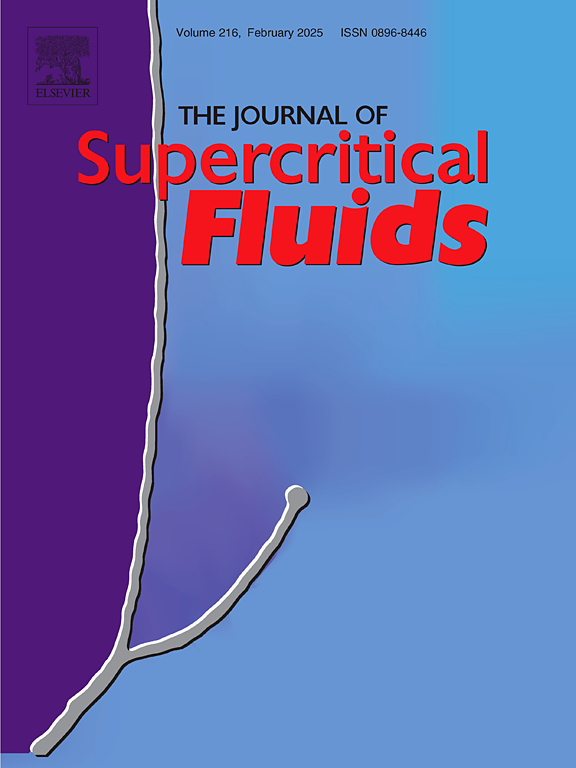Exploring the potential of supercritical carbon dioxide for eugenol impregnation in 3D printed polylactic acid structures
IF 3.4
3区 工程技术
Q2 CHEMISTRY, PHYSICAL
引用次数: 0
Abstract
Biocompatible implants are essential for improving human health and longevity. Incorporating bioactive compounds, such as eugenol, into implant materials can improve biocompatibility and therapeutic efficacy. This study examines the effects of supercritical eugenol impregnation on the physical properties of 3D-printed polylactic acid samples produced by Fused Deposition Modeling. Impregnation was performed using a lab-scale high-pressure system, evaluating the impact of impregnation time on eugenol loading, distribution, and morphology. Fourier Transform Infrared spectroscopy confirmed homogeneous eugenol distribution with impregnation times exceeding 1 h, achieving loadings up to 12 wt%. Eugenol was released slowly over extended periods in a phosphate-buffered solution. Impregnated samples displayed more amorphous thermal behavior, with decreased Tg due to the plasticizing effect of the CO₂-eugenol mixture. Mechanical properties were slightly altered, with reduced stiffness and increased toughness. Microscopic deformations induced by impregnation could potentially enhance cellular adhesion, improving biocompatible material performance.
探索超临界二氧化碳在 3D 打印聚乳酸结构中浸渍丁香酚的潜力
生物相容性植入物对于改善人类健康和延长寿命至关重要。在植入材料中加入丁香酚等生物活性化合物可以提高生物相容性和治疗效果。本研究探讨了超临界丁香酚浸渍对通过熔融沉积建模技术生产的 3D 打印聚乳酸样品物理性质的影响。浸渍使用实验室规模的高压系统进行,评估了浸渍时间对丁香酚负载、分布和形态的影响。傅立叶变换红外光谱证实,在浸渍时间超过 1 小时的情况下,丁香酚分布均匀,负载量高达 12 wt%。丁香酚在磷酸盐缓冲溶液中长时间缓慢释放。由于 CO₂- 丁香酚混合物的塑化作用,浸渍样品显示出更多的无定形热行为,Tg 值降低。机械性能略有改变,刚度降低,韧性增加。浸渍引起的微观变形可能会增强细胞粘附性,从而改善生物相容性材料的性能。
本文章由计算机程序翻译,如有差异,请以英文原文为准。
求助全文
约1分钟内获得全文
求助全文
来源期刊

Journal of Supercritical Fluids
工程技术-工程:化工
CiteScore
7.60
自引率
10.30%
发文量
236
审稿时长
56 days
期刊介绍:
The Journal of Supercritical Fluids is an international journal devoted to the fundamental and applied aspects of supercritical fluids and processes. Its aim is to provide a focused platform for academic and industrial researchers to report their findings and to have ready access to the advances in this rapidly growing field. Its coverage is multidisciplinary and includes both basic and applied topics.
Thermodynamics and phase equilibria, reaction kinetics and rate processes, thermal and transport properties, and all topics related to processing such as separations (extraction, fractionation, purification, chromatography) nucleation and impregnation are within the scope. Accounts of specific engineering applications such as those encountered in food, fuel, natural products, minerals, pharmaceuticals and polymer industries are included. Topics related to high pressure equipment design, analytical techniques, sensors, and process control methodologies are also within the scope of the journal.
 求助内容:
求助内容: 应助结果提醒方式:
应助结果提醒方式:


